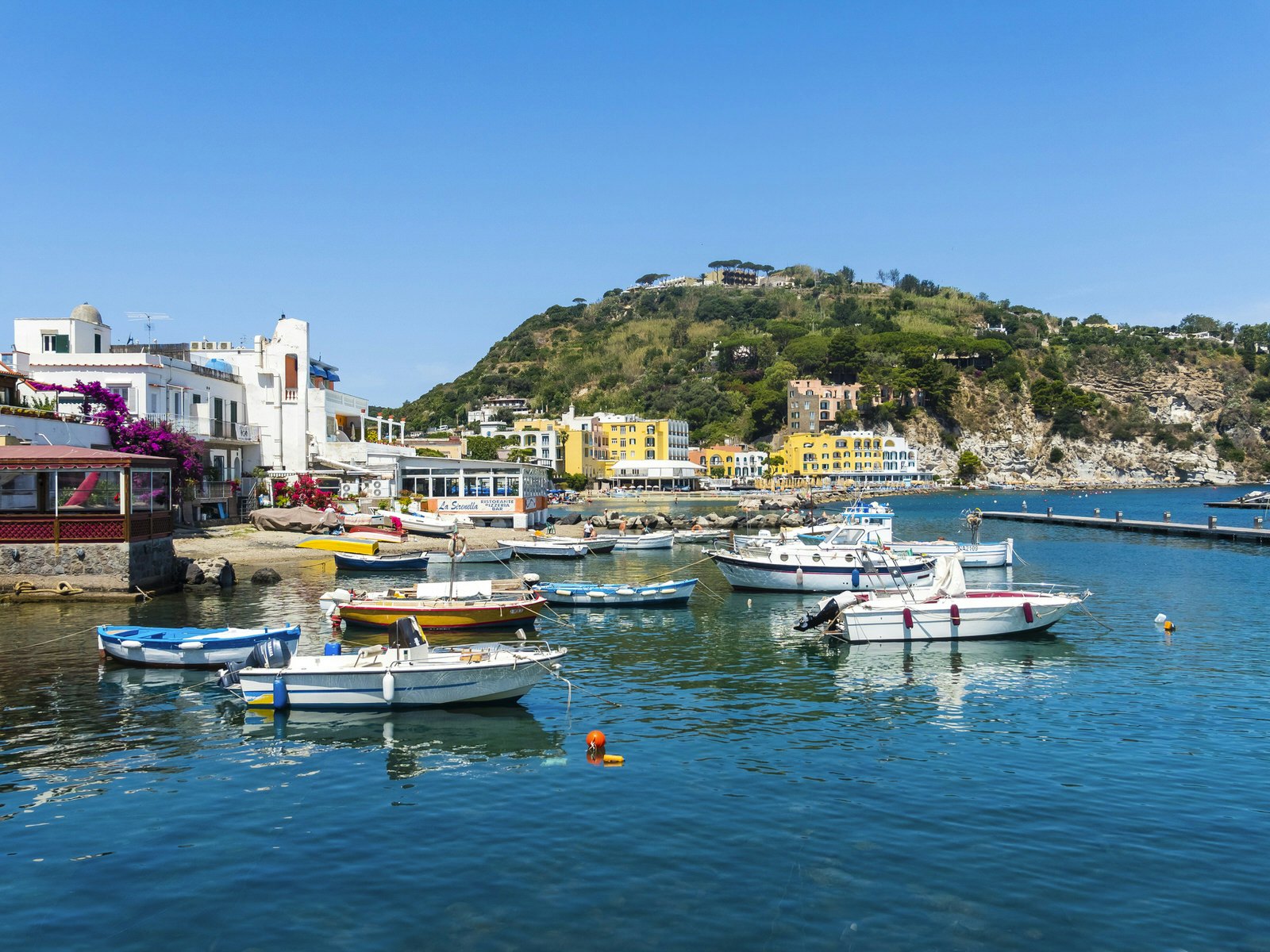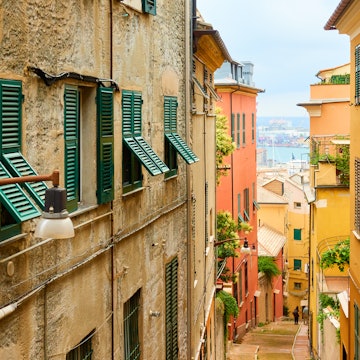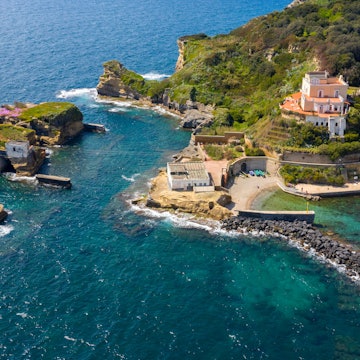

Picturesque Ischia is worth spending 20 extra minutes on a ferry to reach © Getty Images
Ischia is a small, but highly populated, volcanic island that is either one hour from Naples if you get the ferry, or 40 minutes if you get the hydrofoil.
Do not get the hydrofoil.

I do not want to draw an overly simplistic conclusion based on the fact that we, two hard-bitten and efficiency-driven Londoners, took the quick way to Ischia, and the slow way back. I don’t want to suggest that the pace of the island changed our outlook; made us softer, gentler, less conscious of the value of 20 minutes and of what can possibly be achieved in that time. I am not suggesting any of that.
All I am saying is that the hydrofoil is a hell beast, and that the only reason a sane person would get it is if they had been tricked into doing so.
Do I feel tricked into getting the hydrofoil?
A little, yes.
A hydrofoil is, essentially, a boat on stilts. It launches over the waves, rather than gliding through them. Which is a fun concept for, I don’t know, a GCSE physics lesson, and deeply unpleasant to actually experience. You are given the first hint to this when, as soon as you’re in your seat, a man in reflective sunglasses and a high-viz jacket hands you a blue plastic shopping bag to get sick in.
“Will I need this?” I ask.
Hollow laughter.
“Will I need this?” I repeat, thinking that the language barrier is what’s preventing his answer.
“I don’t know,” he shrugs. “Maybe.”
I do not vomit on the hydrofoil, but that is not to say I didn’t want to. Tourists scream and hug their knees while Ischian commuters doze peacefully. To ride the hydrofoil is to be on the inside of a hardware store paint mixer; to ride the hydrofoil is to confront death itself.
But anyway. We arrive on Ischia, an island that was virtually unknown to non-Italian travellers until Elena Ferrante name-checked it in her famous Neapolitan novel series; or, if you’re not that culturally inclined, until Ryanair started directing more flights into Naples.

While geographically very close to Capri and Sorrento, Ischia has a distinctly different, more relaxed vibe: less heiresses and French pop stars, more loudly arguing Italian women and old men silently brushing sand off their porches. We rent, for about £40 a night, a beachside cottage that faces directly onto the water. It is the end of May. The weather is warm and airy. The summer season has not fully descended, and not all of the beach bars and restaurants are yet open.
As such, our neighbours are almost entirely retired Italians who have either completely moved to their weekend getaways or are spending at least half the year there. Almost no one’s house is set up for full-time living: or at least, that is what I am led to believe by the constant painting, tile repair and Italian arguments quickly followed by the sound of furniture moving. There’s a strange melancholy to this, too: sandwiched between bustling households of visiting grandchildren and retirement fishing, there are lone female figures – 75, 80, 90 years old – parked by their darkened windows, looking out. They are there when we leave for the beach in the morning, and they are there when we come back in the evening, plumes of blue cigarette smoke curling from their windows like dragons from a watchtower.

At first, the days are simple: we get up. We make coffee in one of those stove-top pots that make us feel like pre-war lovers, and practically speaking, make very little coffee. We go to the beach in the morning, singe ourselves until lunch, which is a €2 pizza bought fresh from a takeaway window and paired with a large Peroni, also €2. Dinner is good and there are offers of it everywhere, and like most European seaside towns, it is much more expensive than advertised. You know the drill: bread is brought, you think it’s free bread, it turns out the bread is a fiver. You are told enthusiastically about a local wine and asked if you would like to try it: it turns out to be €45 a bottle. You know, that kind of thing.
The lucky thing about having our own kitchen, however, is that we’re free to enjoy the beauty (and economy) of local Ischia ingredients. All the Italian greatest hits are here; olive oil the colour of gold; tomatoes that make you agree that, yes, a tomato is a fruit; garlic so strong you have to tie it in a plastic bag and then put that plastic bag in a sock to stop it stinking out the whole house. Eating at home is not only hugely satisfying, but it opens up our limited travel budget to do what is by far the best activity on Ischia: renting a speedboat.

In the marina, we find a huddle of highly efficient young men who, in exchange for a scan of a driving licence and 100 euros (with some haggling) will give you a boat for a day. Have we any sailing abilities? Had we ever driven a boat before? Hell no, and don’t let that stop you either. If you can drive a bumper car, you can drive a boat, and it’s by far the best way to see the island.
You can dock in Forio, a dusty little town just half an hour west of the main port of Ischia, go cave-swimming, or just drop anchor (drop anchor! Imagine! Saying ‘drop anchor’ in real life!) by one of the many seaside resorts and silently hang out with the plethora of other boats stopping for a lunchtime ocean picnic.

This is the flipside of the hideous hydrofoil: for every moment you’re tossed around a deadly ski boat, wondering “SURELY someone should have asked whether one of us was pregnant or had a heart condition? SURELY this can’t be legal?”, you get another kind of moment. The kind of unregulated, unfussy joy of cracking a beer open on a rented speedboat, eating a pizza with your hands in the street, or watching a senselessly-planned firework display in the middle of the day.
Do you need this?
To quote my Ischian death boat driver: I don’t know. Maybe.















